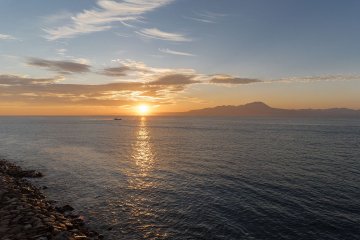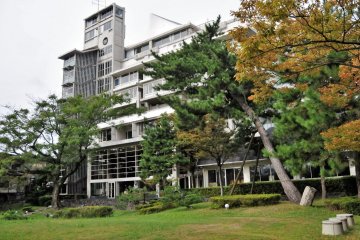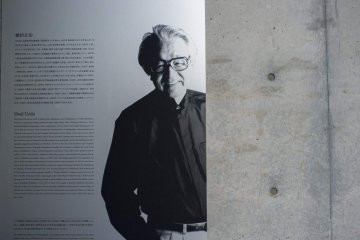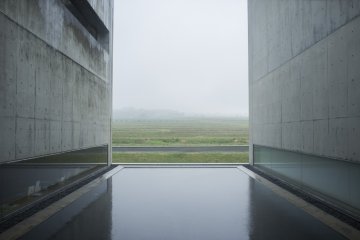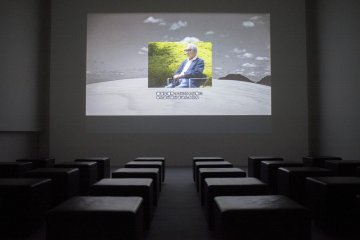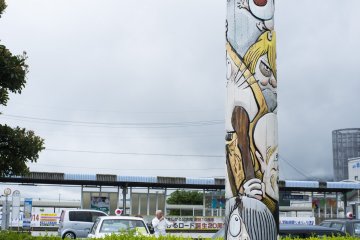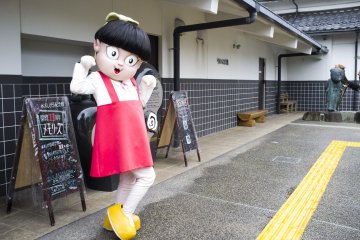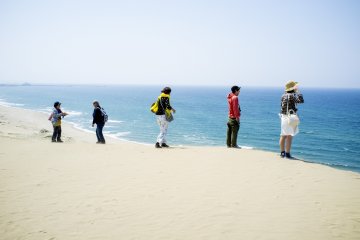Being a photography buff, I was thrilled to find out just minutes before arriving at Kurayoshi Station in Tottori Prefecture, that the late Shōji Ueda resided in Tottori.
For those not in the know, Shōji Ueda is a world-famous Japanese photographer, whose monochromatic photographs combined realistic depictions of his subjects with surrealistic elements of composition, mostly photographing people against the Tottori Sand Dunes. The latter is one of the most popular tourist destinations in Japan, and provided a constant source of inspiration for the renowned photographer.
This 3-part article is dedicated to following the trail of Ueda, to chase after the legacy he left behind. This is a tribute to a photographer who has even inspired a distinctive style of photography in France called 'Ueda-cho'.
His commemoration: The Shōji Ueda Museum of Photography
Located about a 8-minute drive from Kishimoto Station in Hōki town, the museum was founded in 1995 thanks to Ueda's generous donation of his works to Kishimoto-cho. Designed by leading Japanese architect Shin Takamatsu, the concrete lines of the museum's exterior run sleekly through huge empty spaces filled with stones for guests to wander around. The simplicity of the museum exemplifies the spirit of Ueda's photographs - minimalistic, modern and timeless. If one thinks that the building itself is a simple, clean display of architecture, the gallery exhibition halls are even more impressive - lacquered wooden floors with white walls and Ueda's photographs displayed in neat, organised rows. No photographs of the gallery halls are taken in this story, in respect with the wishes of the museum not to photograph them.
A most compelling part of the museum is the audio-visual room. In here, a little overview of camera technology and Ueda's career is shown, but before it starts, a shutter opens up above the screen, and the next thing you realise is that you're sitting in what may very well be the largest camera obscura in the world. A seven meter wide image of nearby Mount Daisen projects on the back wall by a lens unit made up of five lenses, the largest measuring 60 centimeters in diameter. There is also the museum shop, which carries postcards of Ueda's photographs, a few of his photography books and various other souvenirs. This museum is definitely a place for anyone visiting Tottori, or even for photography fans to gain a new perspective on this ubiquitous medium through Ueda's eyes.
His hometown: Sakaiminato
For a contemporary like Ueda to have an entire museum dedicated to his works, it was important to visit his humble beginnings that is the city of Sakaiminato, to explore the hometown where his inspiration sprouted. Although unable to hunt down his studio in Sakaiminato, it was still an honour to walk the streets that the legendary photographer once did. The port of Sakaiminato is now one of Japan's top fishery locations due to large amounts of fresh fish caught here. The city is almost famous for another reason - it was also the home of Shigeru Mizuki, the creator of the famous manga series GeGeGe no Kitarō. The manga's influence is definitely felt here, as the streets of Sakaiminato are strewn with memorabilla and statues of the various monsters, ghosts, and few humans in the manga. There is also the Shigeru Mizuki Road, where most of the figures of the whimsical characters are scattered, along with the Mizuki Shigeru Museum, a tribute to the creator and his life's work.
His inspiration: Tottori Sand Dunes
From Sakaiminato, it is roughly a 45 minute drive, or a 2 hour train ride from Sakaiminato station to JR Tottori station, to the last stop, the seemingly-boundless Tottori Sand Dunes. The biggest of the three sand dune systems in Japan, the sand dunes were formed 100,000 years ago, and its shape is slowly but surely changing frequently due to winds from the adjacent Sea of Japan blowing towards its shores. It is easy to see why this place is such an inspiration for Ueda, but for the man to have used this creation of nature as a backdrop for a large part of his photography career seems out of grasp. Perhaps it is because of the way the dunes are constantly changing in shape, giving Ueda a constant source of inspiration by noticing the different lines and contours of the dunes that add depth to his photographs.
It was a humbling and exciting experience to follow this trail of Shoji Ueda, to visit the hometown which he grew up in, the backdrop which he photographed in, the museum he was remembered in. The legacy he left behind was incredible, and I am really proud to have been able to chase it.




